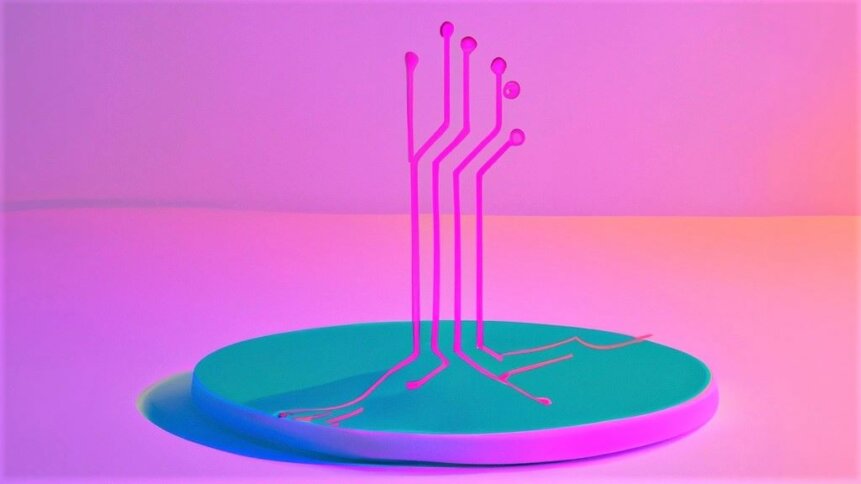Circuits of life – what can tech learn from nature?

|
Getting your Trinity Audio player ready...
|
Nature has no shortage of lessons for device makers looking to make better products with a host of properties that come easily in the natural world. Many thousands of years of evolution have yielded computing systems such as the human brain, which can operate on the power of a dim lightbulb. And Circuits of Life – a UK-based project featuring experts in computational biology and other disciplines – is taking inspiration from the protein-based electronics necessary for life on Earth and aims to build key components to order.
On TechHQ we’ve written about how slime mold has an incredible ability to solve mazes and perform optimizations that would challenge conventional computers. And nature turns out to be rich in computational capabilities.
In his book ‘Quantum Supremacy’, Michio Kaku points out that plants have quantum computing-like properties. For example, leaves are incredibly efficient in photosynthesizing light into chemical energy – much more so than classical physics would suggest.
And Kaku describes to readers how photons of light incident on the leaf surface are channeled counterintuitively like golf balls being hit in all directions yet still finding their way to the hole. Considering leaves as quantum solvers may feel peculiar, but biology is no stranger to properties that have device appeal.
Circuits of life as a molecular toolkit
“The flow of electrons within protein-based circuitry is essential to life, underpinning cellular energy generation and photosynthesis,” writes the Circuits of Life team, introducing its latest findings in the Proceedings of the National Academy of Sciences (PNAS).
In the paper, Ross Anderson and his co-authors describe how to make conductive, biodegradable wires from designed proteins, which could – the researchers believe – open up a new era of environmentally friendly programmable bioelectronics.
The molecular wires, which are comparable in size to features found on silicon chips, are said to be compatible with conventional electronic components made from copper or iron. And, thanks to their protein origins, these nanostructures may also provide a bridge to the biological machinery responsible for generating energy in all living organisms.
Circuits of Life got the go-ahead in 2022 when the proposal to create and comprehend the way that nature builds its electronics was awarded GBP 4.9 million in funding, as part of the BBSRC’s flagship Strategic Longer and Larger (sLoLa) grant scheme. And the support provides five years of funding to build completely new protein-based circuitry, catalysts, and light-harvesting assemblies.
For example, it’s thought that the dynamic nature of proteins could help lower the energy barrier to substrate entry and product exit – offering catalytic support to bioreactions. Artificial bio-inspired electron-conducting circuitry could also lead to novel sensors for diagnosing disease and detecting environmental pollutants.
@uwaterloo Scientists create 'artificial leaf' that turns carbon dioxide into fuel.The "artificial leaf" technology mimics photosynthesis by taking carbon dioxide and converting it into methanol and oxygenhttps://t.co/OjQ34YiLND pic.twitter.com/7QmgkXGdX5
— R+T PARK (@RTPARKUW) November 4, 2019
Nature’s ability to transport electrons is fundamental to cellular respiration – the method by which living organisms obtain energy from food – and photosynthesis. And understanding in more detail how proteins and other related structures enable these bioengineering marvels has benefits for cleantech and building better medical devices.
Artificial leaves capable of turning carbon dioxide into fuel could solve the dual problem of providing green energy and consuming products that would otherwise contribute to global warming.
Bioelectronic medicine – exploring novel neural interfaces
In medicine, there’s great interest in being able to selectively modulate the autonomic nervous system. Neural engineering studies have indicated how it’s possible to act on the internal state of the body and compensate for damaged or dysfunctional elements.
“For decades, several devices known as neural prostheses have used electrical pulses to communicate with the nervous system to improve health and save lives,” writes Marina Cracchiolo and colleagues from the BioRobotics Institute of Sant’Anna School of Advanced Studies, based in Italy. “These devices act by substituting or modifying the activity of a dysfunctional or injured nerve or a neural circuit, which in turn directly controls muscles or sensory organs.”
However, circuits of life – such as the computer-simulated building blocks proposed by Anderson and co-workers in the UK – could zoom in and take bioelectronic medicine to a whole new level. Biocompatible, miniaturized devices raise the prospect of targeting individual nerves to modulate and decipher neural signaling patterns, paving the way for advances in bioelectronic medicine.
Galvani Bioelectronics – a joint venture between pharmaceuticals firm GSK and Google X spinout Verily – is an example of one med-tech developer aiming to transform patient lives through precision neuromodulation. And it’s clear that being able to lean on not just conventional electronics, but also to learn from how nature manages electron flow will pay dividends.
Returning to the idea of circuits of life – bioelectronics inspired by nature – computers play a major role in proposing how to build nanoscale protein wires for long-range electron transfer. The first step is to devise a modular protein platform for creating well-folded variants that can then be extended as part of a computational design strategy.
Techniques such as NMR spectroscopy and cryogenic electron microscopy allow workers to visualize their creations and gather structural insight that can’t be simulated in the digital world. And physical experiments provide confidence in the fidelity of the design process.
“To fully unlock the diverse functional repertoire of the natural oxidoreductases, it will be necessary to integrate molecular dynamics simulations and continuum electrostatics calculations, and other prediction tools, into the design process to define and modulate biophysical properties,” concludes the Circuits of Life team in their write-up.
The group’s comments point to the direction of travel in the project, which still has plenty more to offer the field on top of its early breakthrough in creating a microscopic toolkit of ‘green’ tuneable electrical components.









